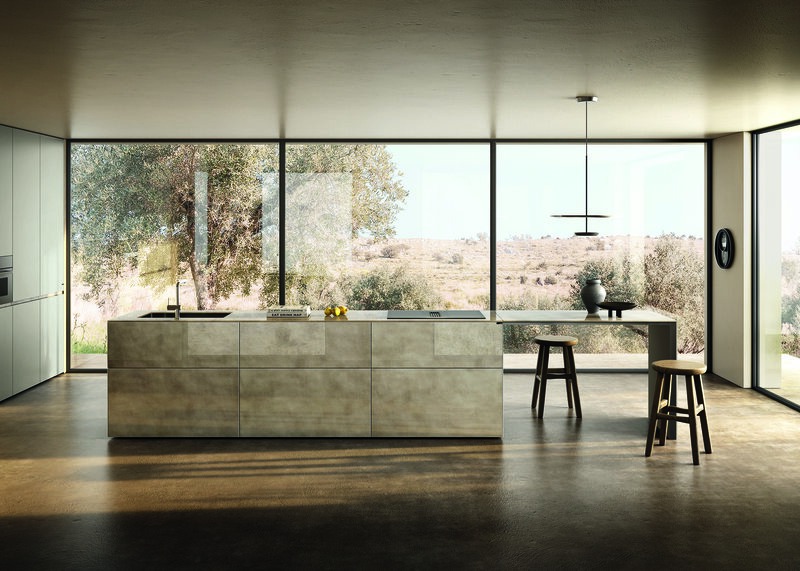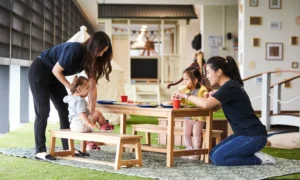The traditional boundaries between rooms are gradually fading. The contemporary home has become a fluid, adaptable space where private life, work, relaxation and social interaction coexist seamlessly.
In response to this shift in how spaces are used, Italian design offers concrete, elegant and functional solutions. With a sensitive and intuitive approach, Italian furniture supports new lifestyles – without ever compromising on aesthetics.
The rise of hybrid spaces: where private and active life meet
Daily life is no longer neatly segmented by room. A living room may host a video conference in the morning, become a play area in the afternoon, and transform into a social hub by evening. Bedrooms can double as offices, kitchens open to welcome long conversations, and reading corners may also serve as spaces for meditation.
This evolution reflects a growing demand: the need to live in environments that adapt to multiple, ever-changing needs. Homes are becoming more fluid and free, but also more demanding in terms of functionality. Hybrid spaces require furniture that can respond to this diversity – without disrupting visual harmony or compromising on comfort.
Furniture as a response to the changing home environment
Considering these transformations, Italian furniture provides refined, practical answers. It favours pieces that are modular, lightweight and easily reconfigurable. An extendable table accommodates anything from a quiet dinner to a lively gathering; an open bookcase helps define space without enclosing it; a modular sofa adapts to the evolving needs of a dynamic living area.
What sets this furniture apart is its ability to combine formal creativity with practical functionality. Durability remains a key principle: even the most flexible and transformable pieces maintain high standards of quality, ensuring long-term stability and reliability.
Versatile pieces: opening up space without losing definition
One of the main challenges in hybrid design is preserving the clarity of each area’s function while encouraging continuity across living zones. Italian design excels in this delicate balance. It offers furniture capable of creating smooth transitions and organising space without restricting use.
The secret lies in aesthetic modularity – one that structures space lightly, connects rather than divides, and creates cohesive atmospheres even in complex layouts.
Balancing beauty and adaptability: the strengths of Italian design
What distinguishes Italian design is its ability to combine formal precision with freedom of use. Even when addressing modularity or transformability, it never compromises on craftsmanship, material quality or attention to detail.
Modern Italian furniture expresses a quiet elegance, while integrating practical solutions designed for everyday life. It evolves with its users, adapting to the pace of modern living, yet always retaining a strong visual presence. Here, adaptability is not a compromise – it’s a value.
Living differently: design as a partner for new ways of inhabiting space
Hybrid spaces demand a new approach to living – more flexible, more fluid, more closely attuned to real needs. In this context, furniture can no longer be static. It becomes an active part of daily life, anticipating how spaces are used, supporting transitions, and enhancing each lived moment.
With its refined balance and sensitivity to form, Italian design is a natural partner in this shift. It provides the tools to envision a home where each piece finds its place, each space maintains its identity, and every day brings a new possible configuration.
LAGO: Italian tradition, modular design and a sustainable vision for contemporary living
Founded in 1976, LAGO embodies a vision of design deeply rooted in Italian artisanal tradition. With a heritage stretching back to the late 19th century, the company has evolved with consistency and precision, blending quality craftsmanship, innovation and international reach. Since 2006, the arrival of the fourth generation has accelerated the digital transformation and global development of the brand.
Modularity is one of LAGO’s cultural cornerstones. Far from being just a functional concept, it is embraced as a creative method for designing evolving, adaptable and sustainable spaces. This philosophy translates into a comprehensive design approach, grounded in flexibility, freedom of expression and visual continuity.
At LAGO, design is seen as a tool for creating meaning and connection. Beyond pure form, every project begins with a deep understanding of lifestyles and behaviour. The goal is to create living environments that support the rhythms of daily life and foster meaningful interaction between individuals and space.
Sustainability is central to the company’s industrial model: carefully selected low-impact materials, waste reduction, and full process traceability are integrated into every phase of the product lifecycle. LAGO adopts a concrete and responsible approach that permeates its entire production system.
This commitment is complemented by a structured digital ecosystem, allowing users to explore, design and personalise spaces in a fluid and immersive way. The combination of physical and digital elements strengthens LAGO’s ability to offer coherent, thoughtful and connected solutions – whether for residential living or public and contract projects.



































